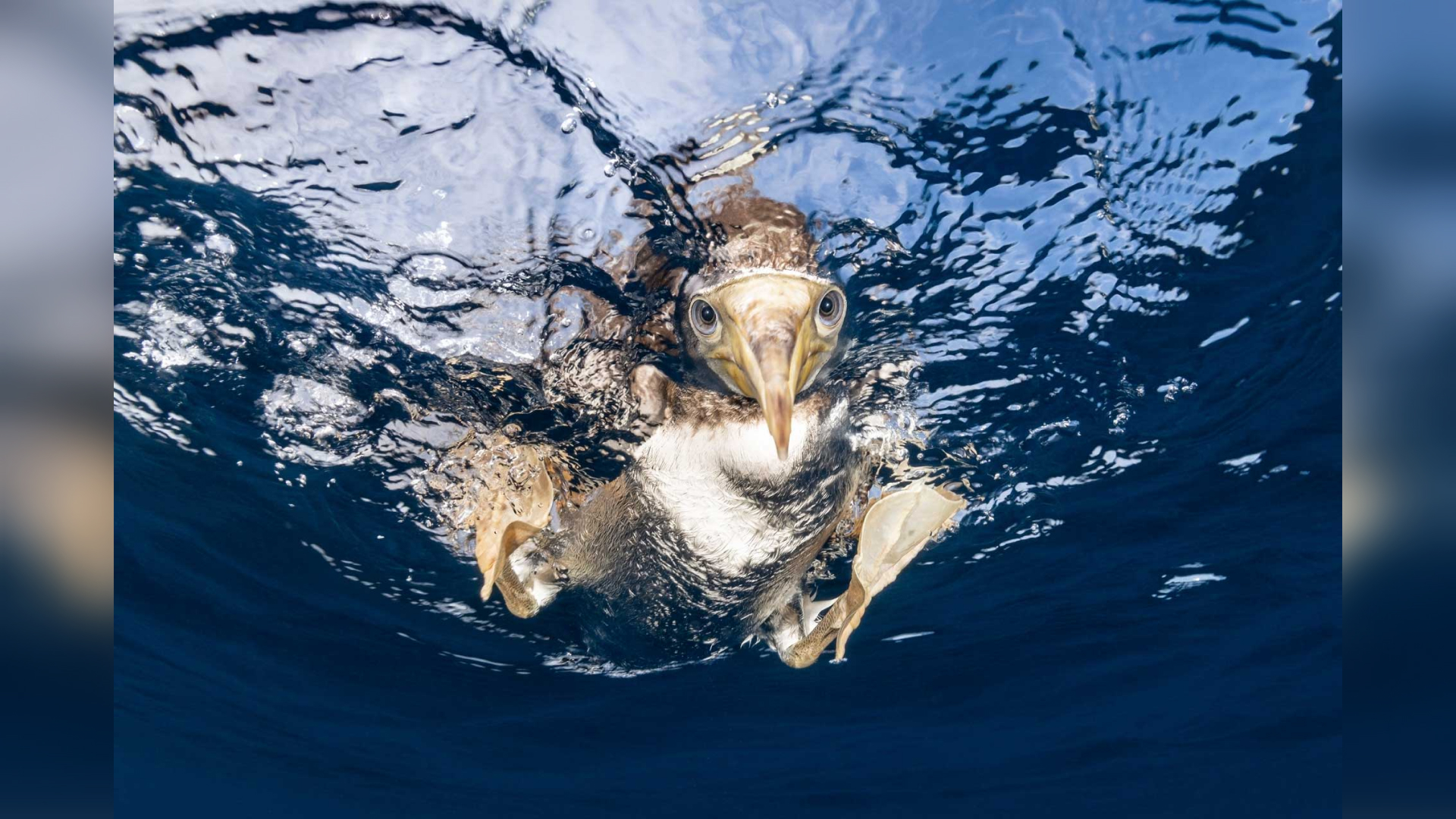
From the jaw-dropping views from dizzying mountaintops to the inescapable darkness of the deep ocean, thousands of other-worldly images of nature impressed us in 2023.
Here, we highlight 10 of the most stunning nature photos of the year.
He looks to the heavens
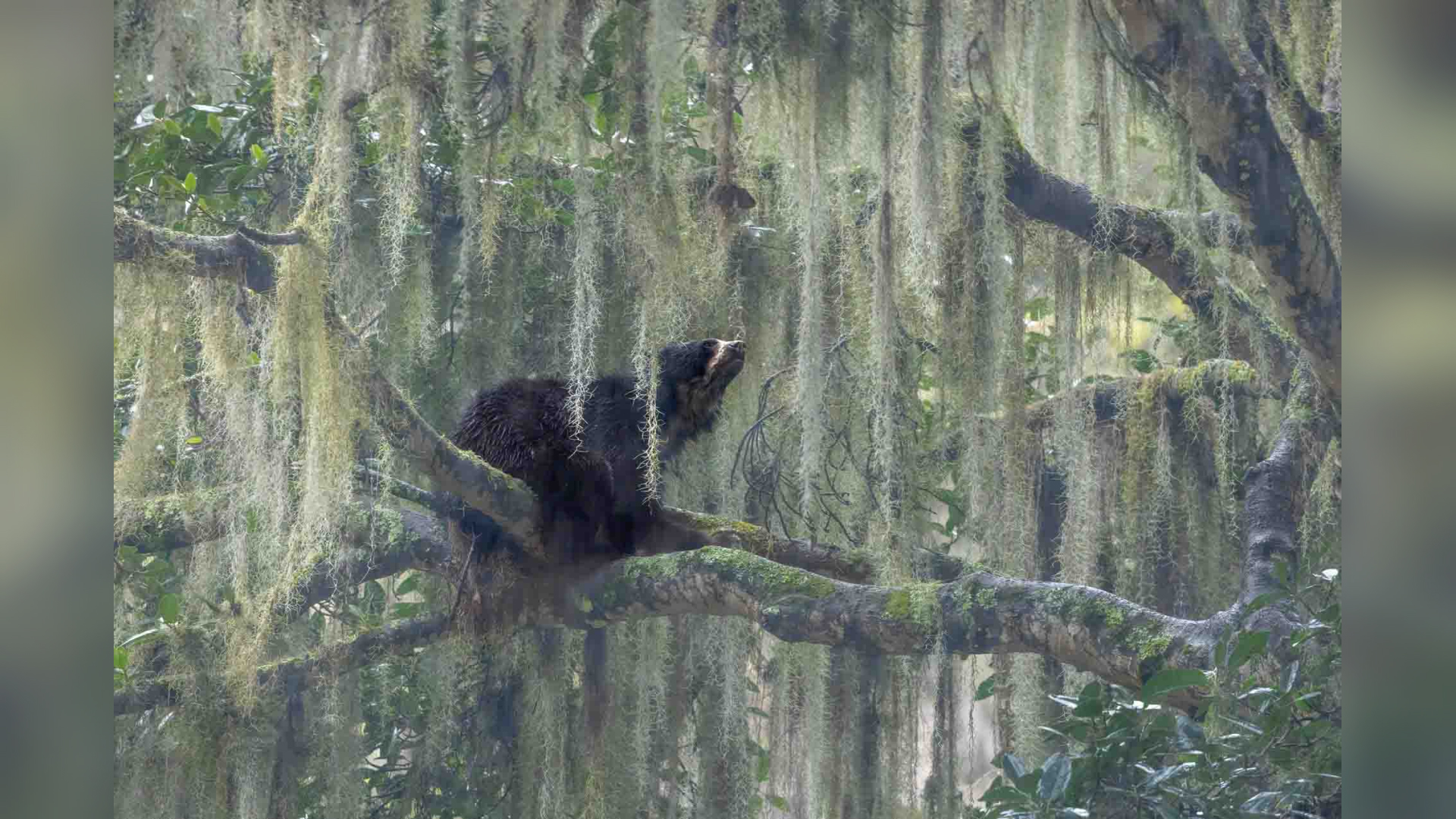
South America's only living bear species was captured climbing a century-old fig tree surrounded by Spanish moss in an award-winning photograph from the Nature Photographer of the year competition.
Spectacled bears (Tremarctos ornatus) are known for their agile climbing and unique patches of yellow fur. After a treacherous 11-day hike in the Ecuadorian Andes, nature photographer Jacquie Matechuk captured the bear at around 8,000 feet (2,400 meters) above sea level.
The image, titled "He looks to the heavens," was the overall winner and also won first place in the Mammals category.
The things you do for love
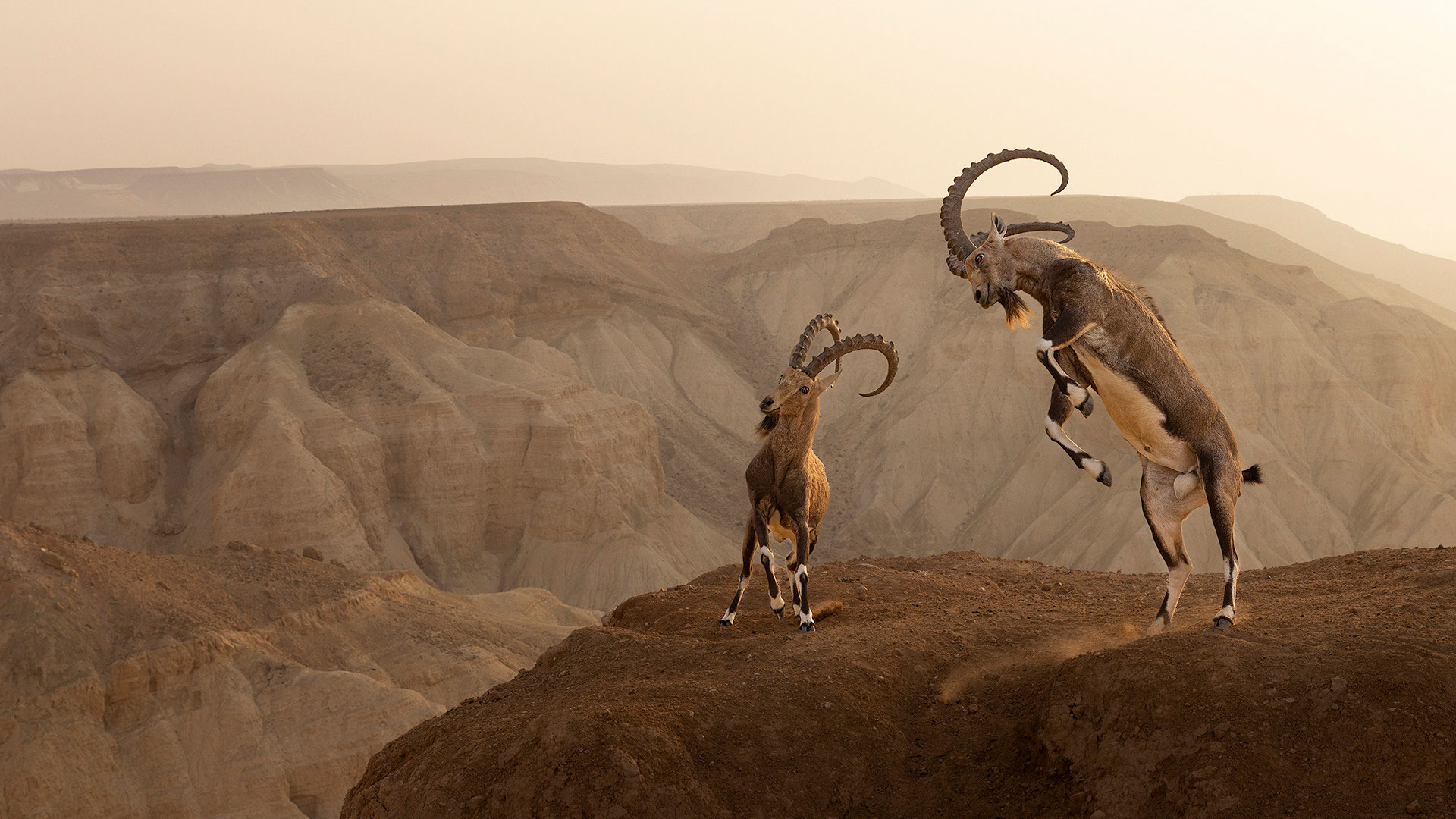
In the high altitudes of the Zin Desert, a photographer captured two male Nubian ibexes (Capra nubiana) going head-to-head in a battle.
Wildlife photographer Amit Eshel captured this image during the breeding season, or rut. During the rut, the males take turns showing off their impressive horns before butting their heads together to compete for females.
Titled "The Things You Do For Love," this photo was awarded first place in the Wildscape & Animals in Their Habitat category of the Nature inFocus awards.
The golden horseshoe

An image of a golden triple-spined horseshoe crab (Tachypleus tridentatus) took the Grand Title prize in the 2023 Wildlife Photographer of the Year competition, hosted by the Natural History Museum in London.
Shuffling along the sea-floor, three juvenile golden trevallies accompanied the golden horseshoe crab in an eerie image that the judges described as "'hauntingly beautiful."
Underwater photographer and marine biologist Laurent Ballesta is the second person to be awarded the Grand Title prize twice. In 2021, his photograph of camouflaged groupers spawning stole the show.
Alpine newt's underwater feast
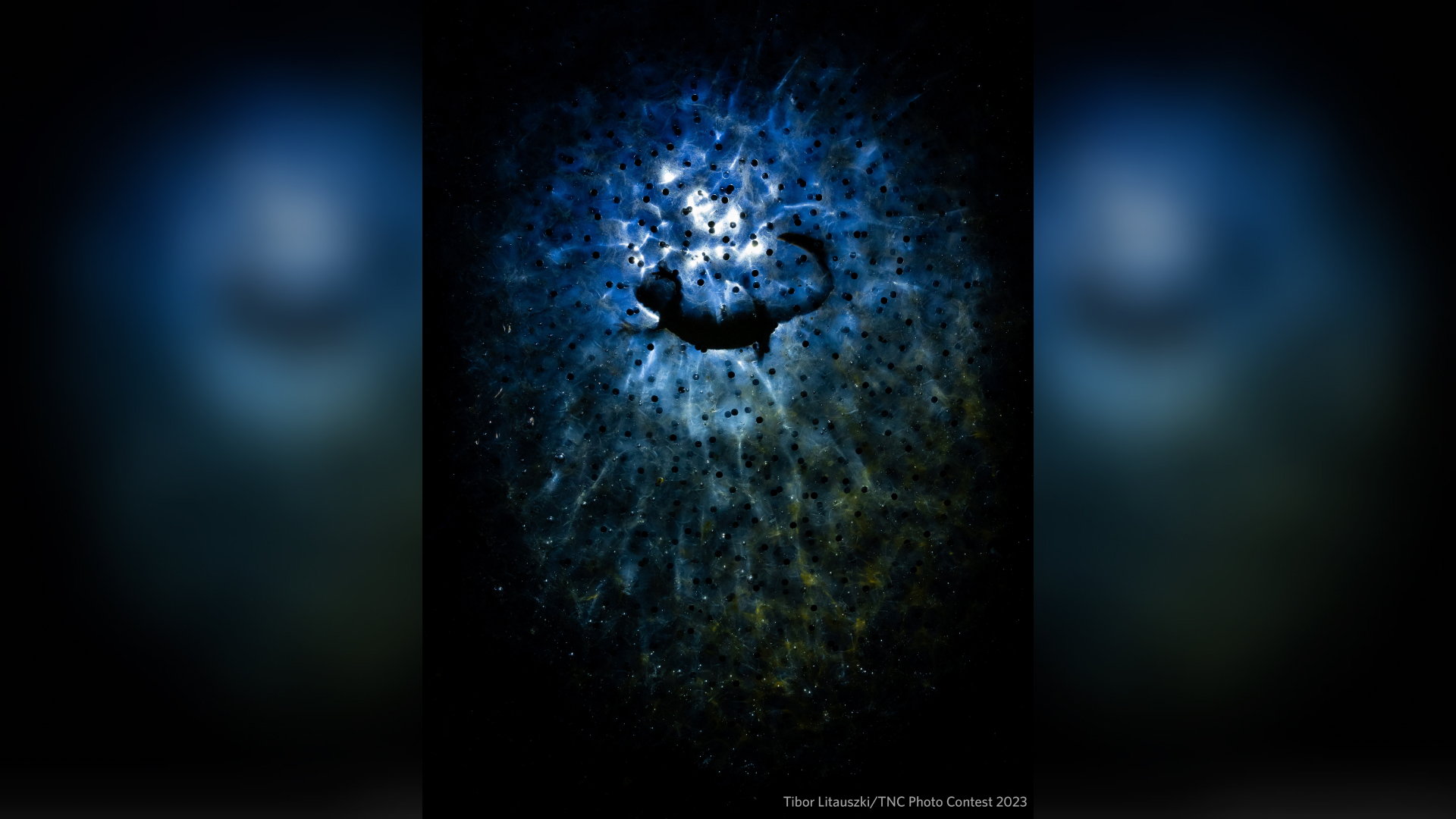
The egg-hungry alpine newt (Ichthyosaura alpestris) lives in the forests and freshwater ponds of Germany. In the wild, these newts feed on all sorts of juvenile aquatic animals, including the jelly eggs of frogs.
"As soon as the frogs lay their eggs, a few days later, at dusk, the newts appear and feast on them throughout the night," photographer Tibor Litauszki said in a statement. "Sometimes multiple newts compete for the same prey." Litauszki captured the Grand Title award for the Nature Conservancy Photo Competition 2023.
Inspector booby

The brown booby (Sula leucogaster) plunges into open water at high speed, feeding on krill, shrimp and small fish. These birds are incredible divers, but they're clumsy during take-off and landing. This uncoordinated behavior has earned them a name derived from the Spanish word "bobo," meaning stupid or daft.
While watching the brown booby feeding in short intervals, professional scuba diver and wildlife photographer Suliman Alatiqui got into position to capture this close-up portrait in the waters near Mexico's Revillagigedo islands. This photo came in first place in the Portraits category in the Nature inFocus 2023 contest.
Related: A creepy crocodile and glacial 'guts' among stunning winners from nature photography competition
Wolf spider mama
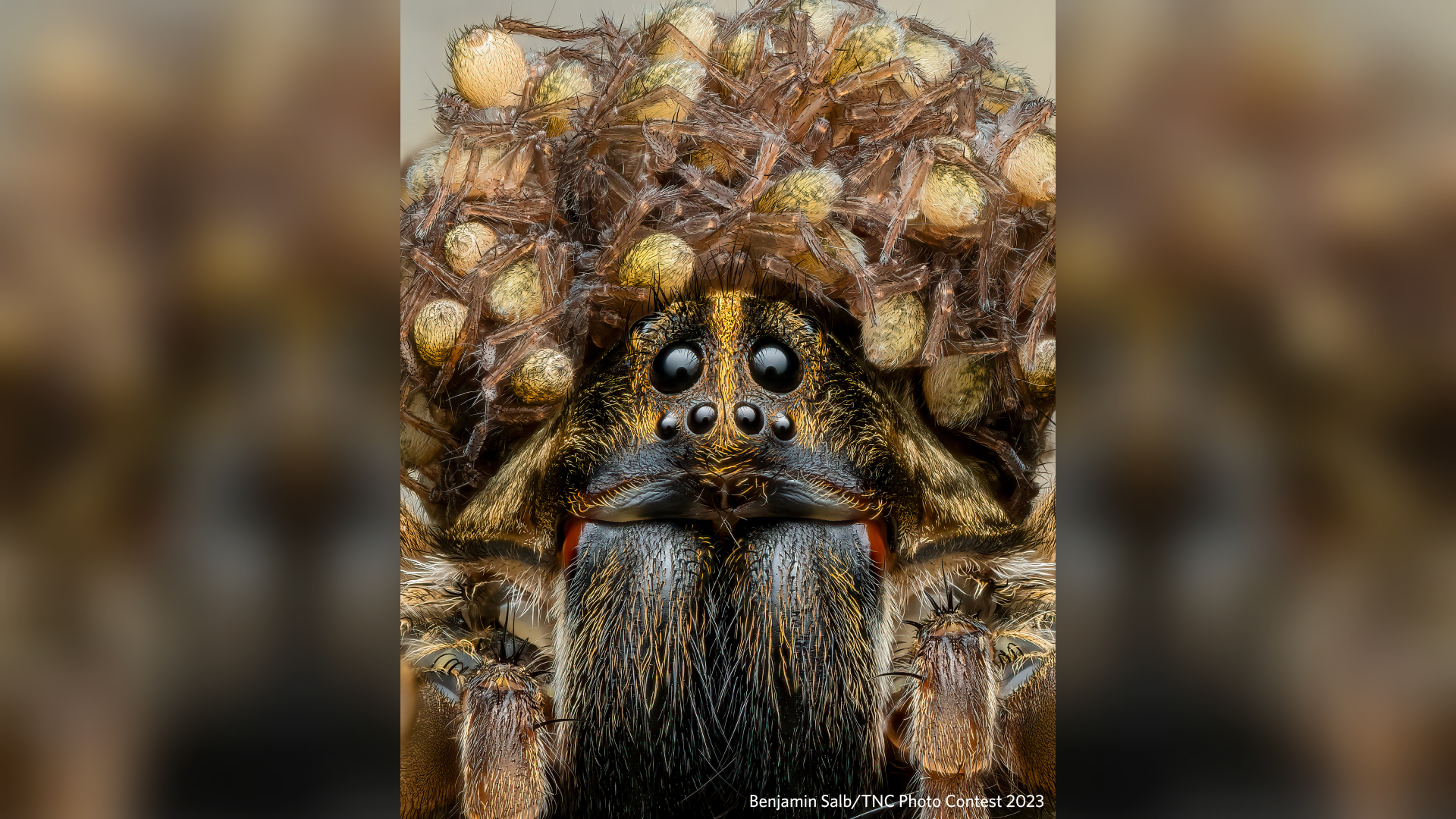
This wolf spider mama wears a crown of spiderlings in an award-winning photograph for the 2023 Nature Conservancy Photo competition.
Female wolf spiders carry their spiderlings and unhatched egg sacs for around 20 to 30 days in the summer, offering the spiderlings food and protection as they cling to the "hairs," or setae, on her back.
Early one morning, photographer Benjamin Salb encountered the spider in the middle of an asphalt path. Each baby spider was eerily still. This detailed photo was awarded first place in the Insects and Arachnids category.
Last breath of autumn
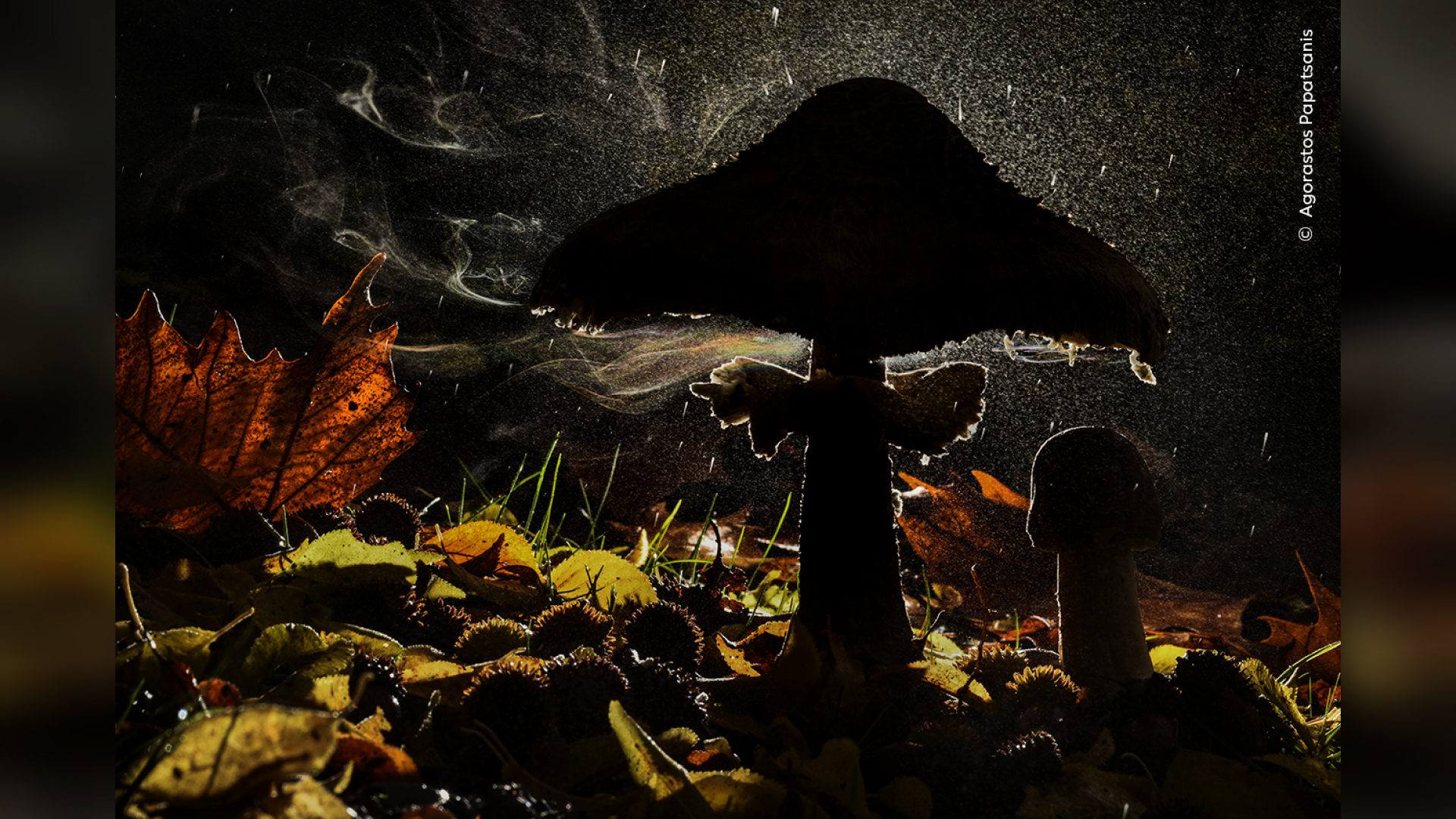
Down on the forest floor, mushroom spores seem to glisten in what is described as a "fairy-tale scene" called "Last Breath of Autumn." The magical colors are created from the refraction of light through the wind and rain.
Unlike plants, mushrooms produce spores to grow. During windy and rainy weather, billions of these spores are ejected from the gills underneath the pad, using the elements as transport. The spores eventually land in damp and humid areas, where there is food that allows them to grow.
Despite the rain, photographer Agorastos Papatsanis carefully positioned his silver photographic umbrella and flash to capture the unseen. This photo was awarded first place in the Plants and Fungi category in the 2023 Wildlife Photographer of the Year Competition.
Paper Nautilus Rider
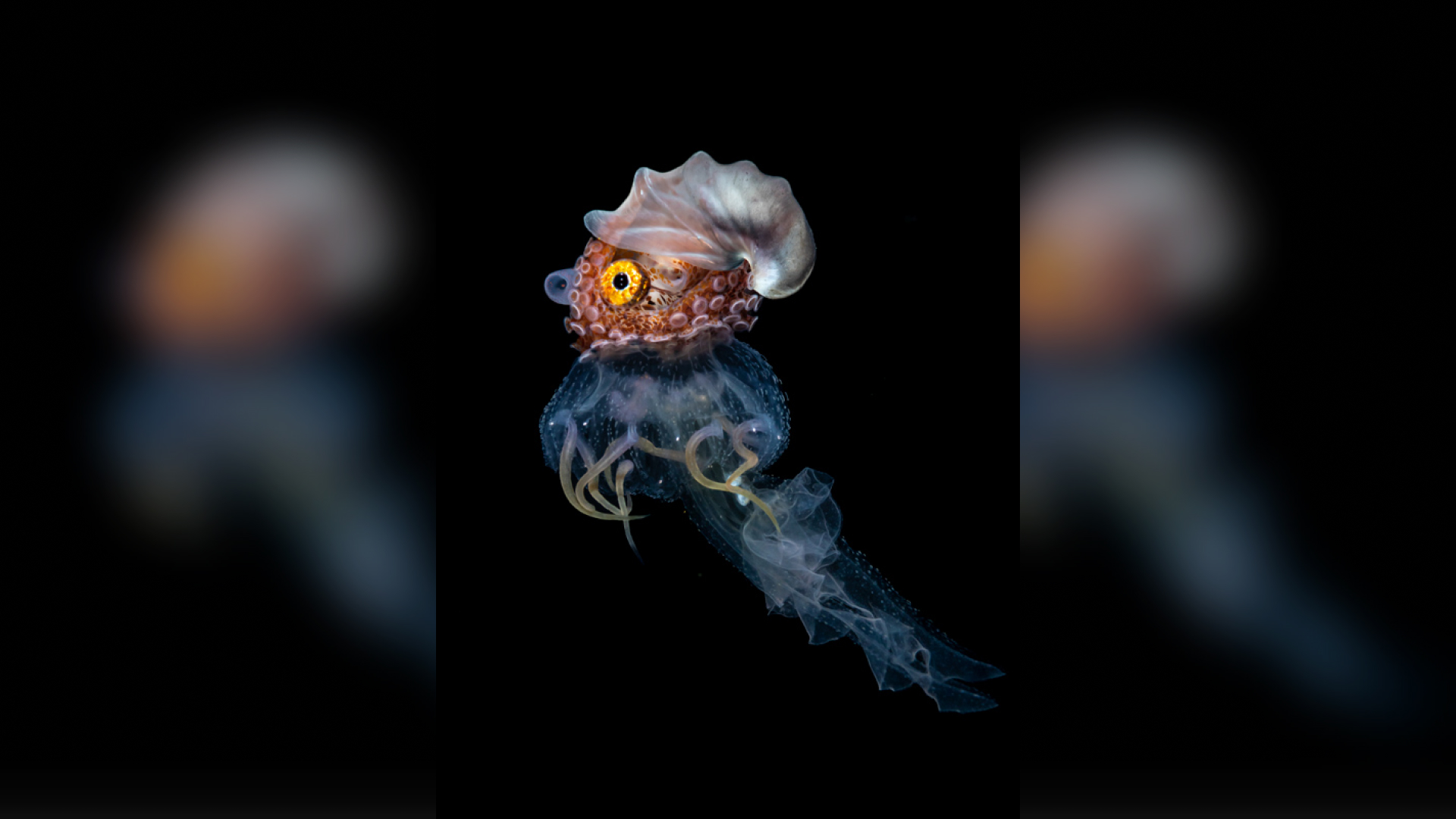
In "Paper Nautilus Rider," a tiny paper nautilus wears a skirt of tentacles in deep, dark waters in the Philippines.
Also known as argonauts, these small critters are known to hitch rides on jellyfish — or so it seems. In fact, these cephalopods bore holes into the jellyfish, to inject a tube called a siphon into their guts. From this siphon, the argonauts suck up the food of their hosts.
Underwater diver and photographer Renee Capozzola captured the image during a blackwater dive. The photo won the Underwater category in the Nature Photographer of the Year Competition. Blackwater dives involve night diving to extreme depths with powerful lights that emulate the moon to attract all kinds of species.
Rodent optic-nerve head
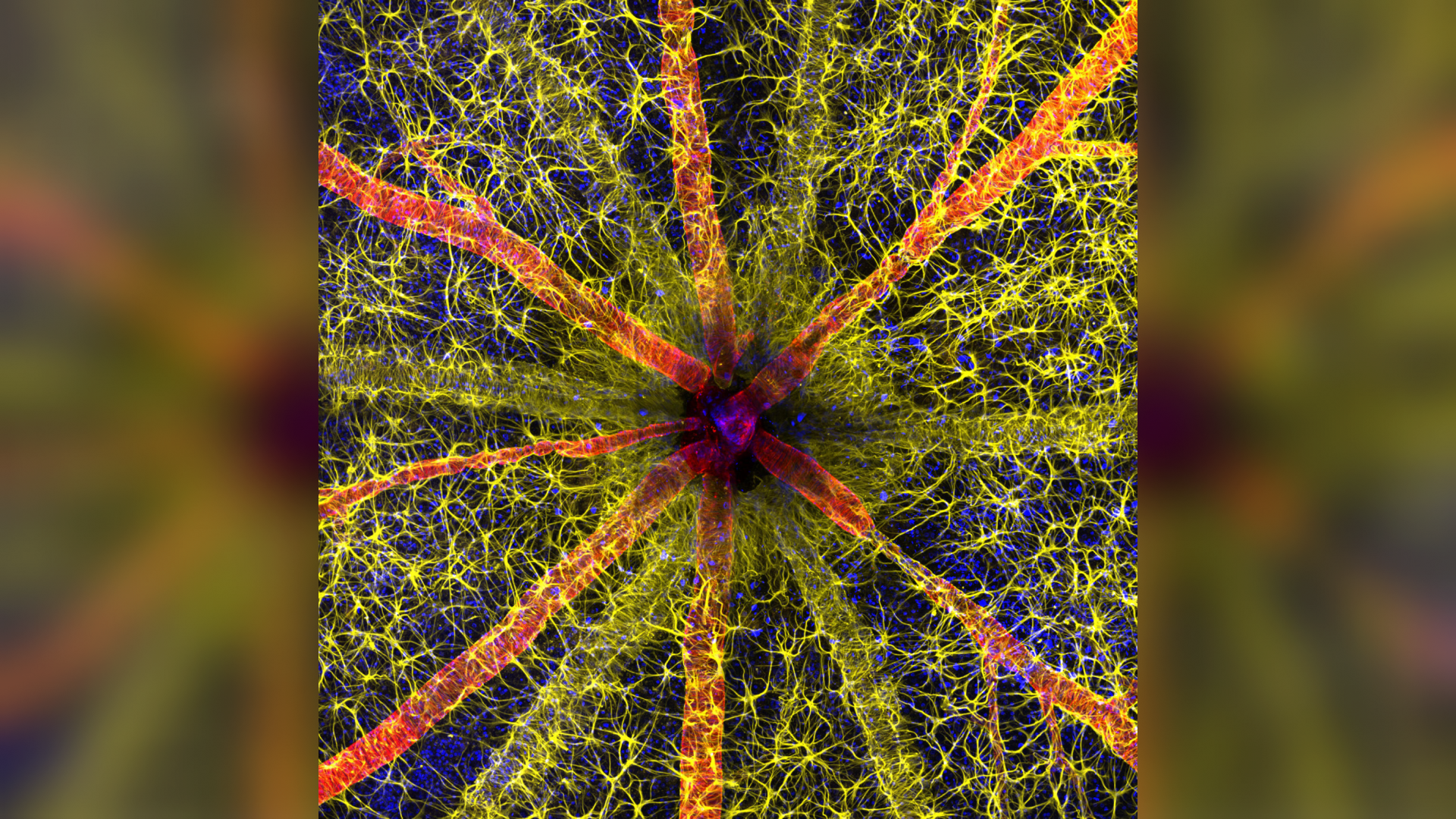
The colorful and spiderlike webbing of neural cells within the eye of a rat took first prize in the 2023 Nikon Small World Photography Competition.
Hassanain Qambari and Jayden Dickson are researchers at the Lions Eye Institute who study diabetic retinopathy, a complication of diabetes that can cause irreversible eye damage.
Their image aims to show the complexity of the research and the importance of early detection.
Grab the bull by the horns
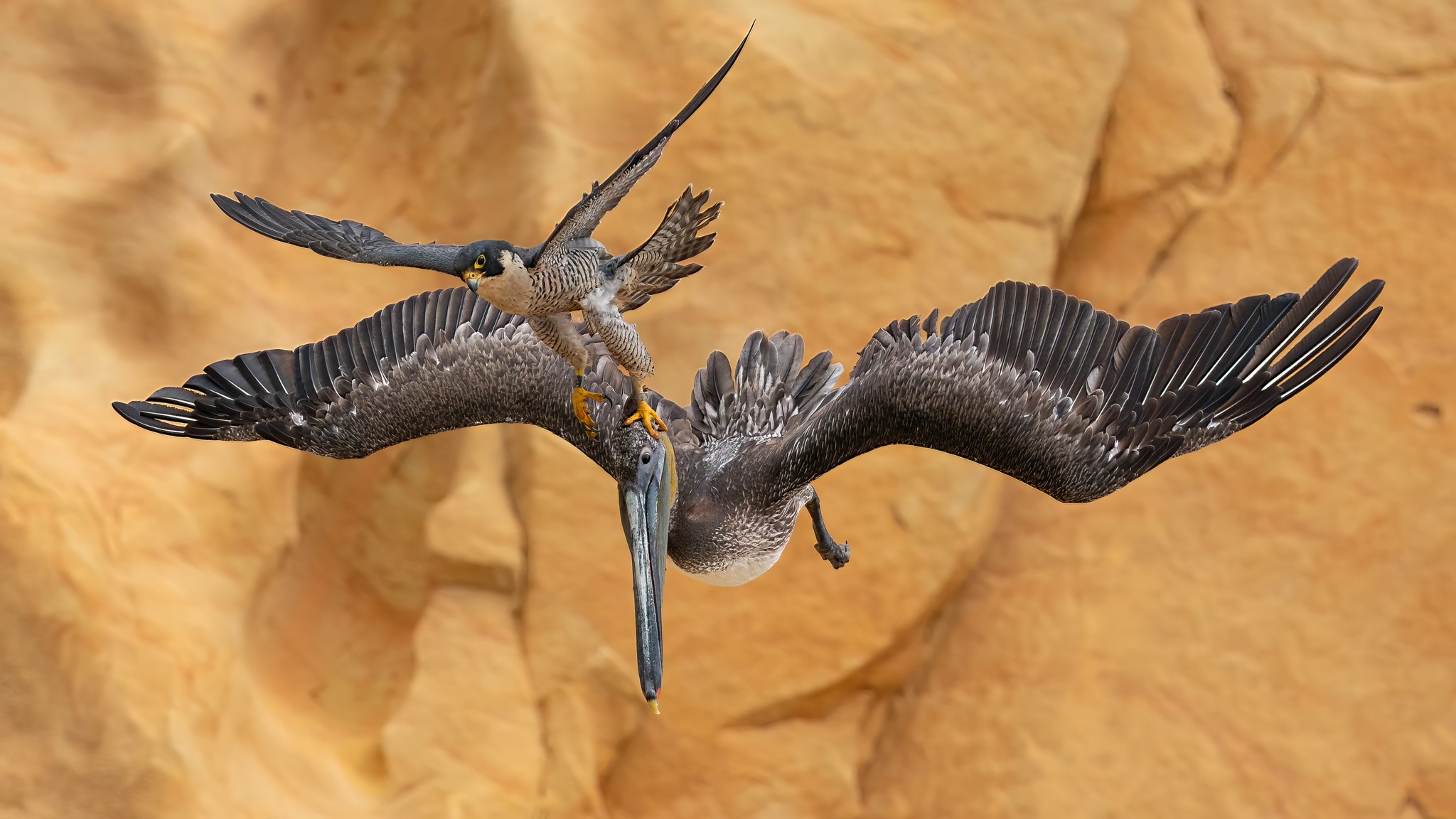
At high speed, a female peregrine falcon fiercely grabbed the head of a stunned brown pelican with its sharp talons in this captivating image, titled, "Grab the bull by the horns."
Female peregrine falcons (Falco peregrinus) become highly protective of their nests during breeding seasons. "For four years, I attempted to capture these rare moments of her attacking large brown pelicans with incredible speed and agility," photographer Jack Zhi said in a statement.
The image, caught at a high speed, was awarded the Grand Prize Title and Gold winner for the Bird Photograph of the Year 2023.







